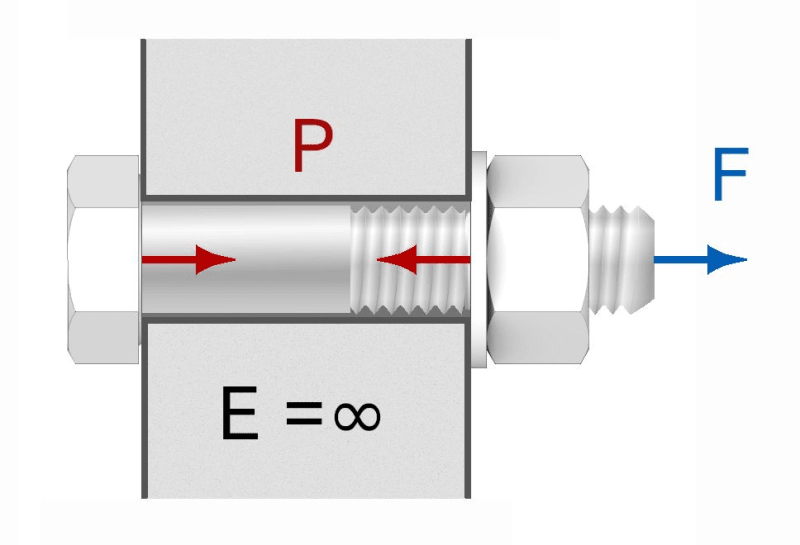-
1
- #1
Howdy!
This is another tricky problem to check your knowledge and common engineering sense
Given a steel bolt in an infinitely stiff package. First, we tighten the nut until we prestress the bolt with a force P. Then, we pull the bolt with a force F. What is the final axial force inside the bolt (between the head and the nut):
A) P + F
B) F
C) P
D) other (please explain)

Cheers!
Ned Ganchovski
A better software for your calculation notes, free and open source:

 github.com
github.com
This is another tricky problem to check your knowledge and common engineering sense
Given a steel bolt in an infinitely stiff package. First, we tighten the nut until we prestress the bolt with a force P. Then, we pull the bolt with a force F. What is the final axial force inside the bolt (between the head and the nut):
A) P + F
B) F
C) P
D) other (please explain)

Cheers!
Ned Ganchovski
A better software for your calculation notes, free and open source:
GitHub - Proektsoftbg/Calcpad: Free and open source software for mathematical and engineering calculations.
Free and open source software for mathematical and engineering calculations. - Proektsoftbg/Calcpad

![[ponder] [ponder] [ponder]](/data/assets/smilies/ponder.gif)
